This year, Four Kitchens added VR and immersive content offerings to our services, so 360 cameras are everywhere. And this May, my friend Evan brought one on the roadtrip. I’d always thought photospheres were a fun gimmick, and I’ve taken some with my phone, but they go in the bin of vacation snapshots that I don’t share. Never really knew what to do with ’em.
Until Evan came back with images like this:
Photo credit: Evan Mackay. LG 360 Cam R105.
Though I’ve captured similar images with my phone, spinning about on a mountain trying to capture each angle without shifting or having anyone walk through the scene, then waiting for the stitching process to finish and seeing all the stitching errors kinda ruins the magic. And there are always disembodied feet.
Captured with a Nexus 5X. I slipped and fell into the river in the process.
Being able to take these photos in a single exposure makes them faster to capture, reduces stitching errors, and allows me to either be out of the exposure or completely in it, no more ghost boots missing their owner.
So I’m making room in the camera bag for a new a new Ricoh Theta S!
Thoughts on the Ricoh Theta S
My frame of reference (ba-dum-shh) is limited to four experiences:
- My new Ricoh Theta S. $325*
- Evan’s LG 360 Cam R105. $125*
- Four Kitchens’ Samsung Gear 360 cameras (original version). $145*
- Using my Nexus 5X and Google Pixel to capture them manually.
* Prices pulled on 7/03/2017 on Amazon
Clearly, these aren’t competing in the same price-range. This is my review of the Theta based on my experience with these other units, not a recommendation on which among these to purchase. The R105 is a low-cost entry level device. The original Samsung Gear was $200 when I made my purchase, but has dropped in price now that its successor has been released, which I haven’t seen yet. Best Buy had the Theta on sale when I grabbed it.
The Good
The Theta works with any phone. Using the Theta with your phone is only needed once to set the clock. After that, power on and use it in automatic mode. Or, power-on with wireless button pressed to start in self-timer mode. If you do capture remotely with your phone, the GPS location is saved to the image and additional options are available.
The R105 works with any iOS or Android phone. The Gear only works with Samsung phones.
The Theta offers rich exposure options in the app.
- Full Auto, which offers:
- Noise Reduction and HDR Rendering
- DR Compensation: I could not find a good description of what this does. According to help docs on Theta360, “Outdoors in places with much differences in brightness and darkness.” Forums and my own experience say the effect is similar to HDR mode.
- EV Compensation
- Shutter Priority
- ISO Priority
- Full Manual (so, Shutter and ISO control; aperture is fixed f/2.8)
- WB Override (though auto has served me well).
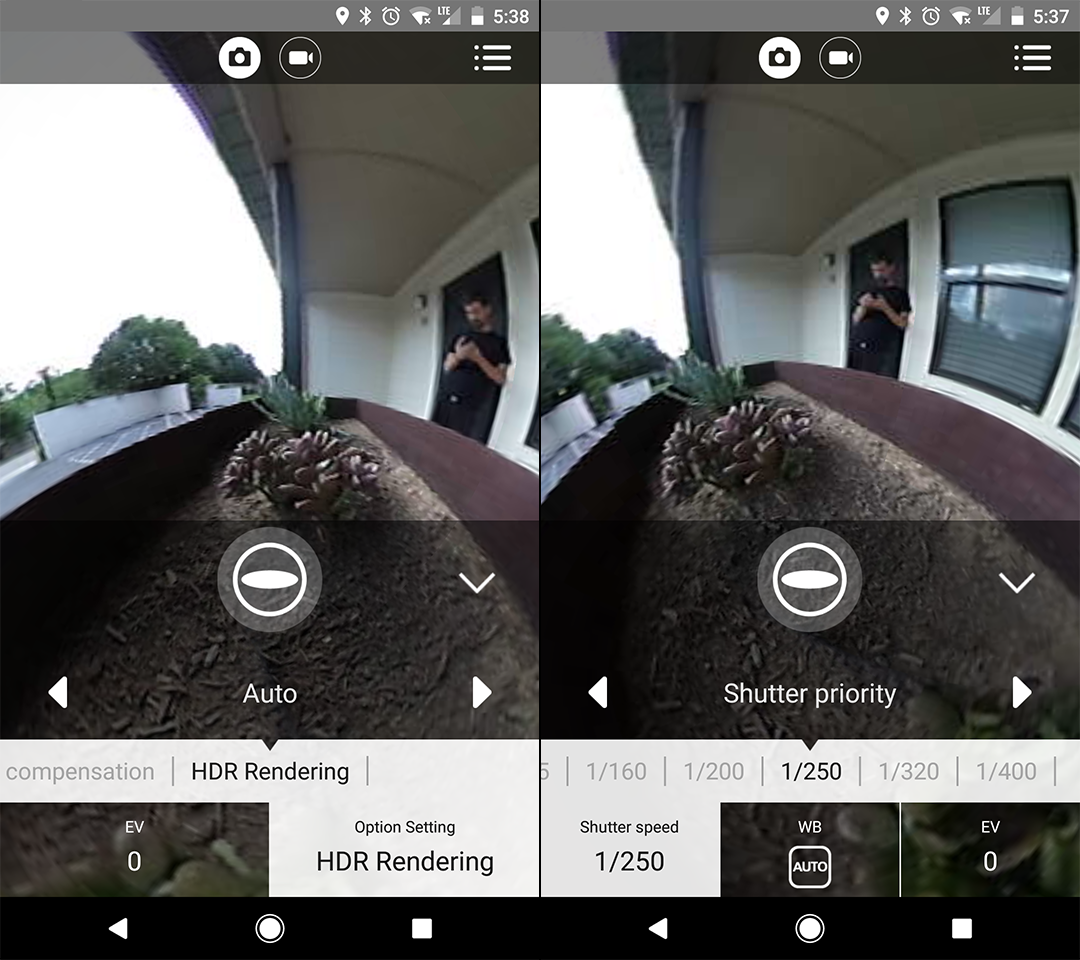
The Samsung does not offer any manual shooting controls. The R105’s offerings are similar to the manual options in the Theta, without HDR and Noise Reduction.
Image Stitching is very good. The Theta’s lenses are really close together, so it doesn’t have the perspective shift or as much of the “lines not matching up” problems as other units.

Left: R105. Center: Theta. Right: Samsung Gear 360.
The R105 has the same form factor, but sometimes close-in items disappear around the edges. The Gear’s lenses are further apart, so many of our company images have noticeable seams if something was in that blindspot along the edges. Stitching errors seem worse on things closer to the camera, but the Samsung even had trouble with the convention hall ceiling. For this, I think Ricoh and LG picked a stronger form factor by keeping the elements closer together.
It hides itself exceptionally well. Different cameras take different approaches to this, but the Theta does a great job removing itself from images if it is sitting on a surface in the image. Using a stand or tripod will still show, so I 3D printed a tiny minimalistic pedestal for that.
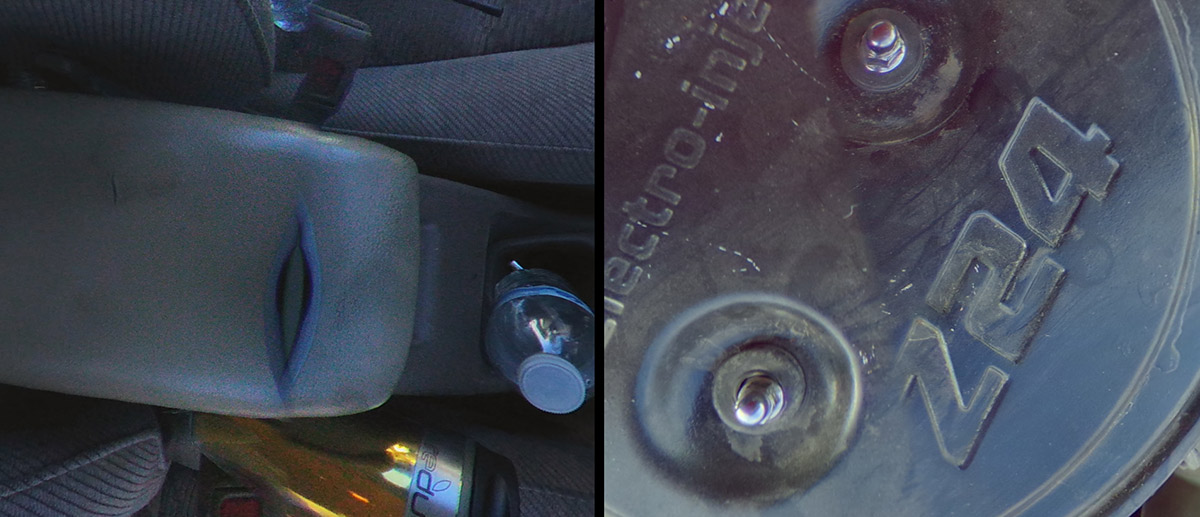
Left: R105. Right: Theta.
Both the Samsung and the Theta do better at removing themselves from images than the R105 when not on a stand or tripod.
It’s pocketable. The slim rectangle form factor of the Theta makes it pocketable, so I’m more likely to bring it with me even without a camera bag.
The R105 is shorter and comes with a thin hard-case, so it’s even more portable. The Gear is a ball; it’s a small addition to any bag but isn’t easy to pocket.
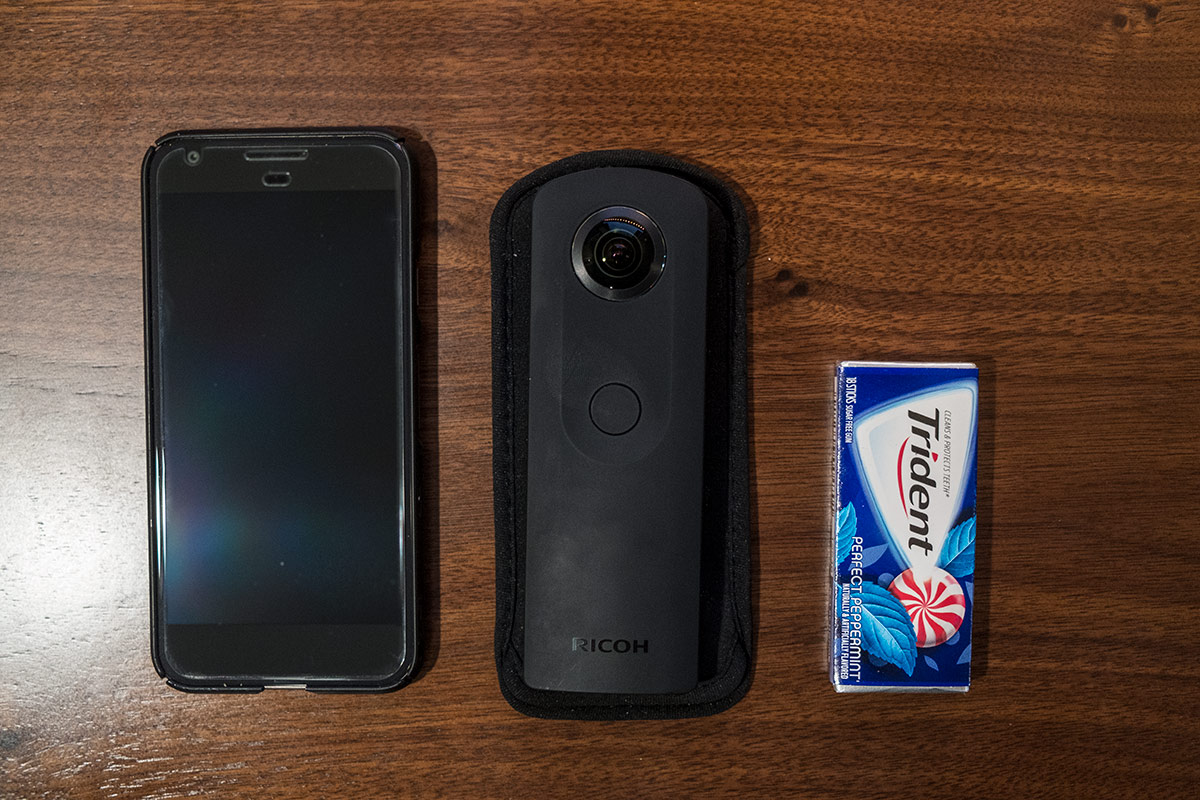
The Bad: Theta’s Fault
Equirectanular conversion for stills is instantaneous. This means there’s a 3-4 second delay (or, if you have HDR or Noise Reduction modes activated, 10-12 seconds) before the camera is ready is take another still. In practice, this bothered me more when I was testing the unit than when I was out using it.
Both the R105 and the Gear delay processing for stills until requested. All three delay processing for video until requested.
Splitting functionality into three applications hurts the user experience. The Theta’s management and capture app, “Theta S” doesn’t do the photo editing or video editing/conversion. For that, you’ll need “Theta+” and “Theta+ Video,” respectively, though I find I don’t use them.
The Bad: The State of 360 Photography
Resolution is not high. For cameras in a consumer price-range, none of these offers a resolution for image viewing like I’ve become accustomed to with DSLRs or even flagship smartphones. This feels like where smartphone cameras were a few years ago. Sure, numbers like 12 to 18 megapixels sound impressive for these cameras, but once the image is warped into a sphere, it is noticeably less sharp and more pixelated.
This is where taking photospheres with a phone really wins. Because there are many source images all taken at a higher resolution, the resulting stitched image is larger. Photosphere output on a Google Pixel phone is 40 megapixels.
Traditional photo editing tools aren’t ready. Photoshop or Lightroom can open equirectangular JPEGs and the metadata stays in place, but Lightroom can’t show the sphere experience and Photoshop doesn’t make it easy. Neither apply edits or manipulations with a guaranteed seamless edge. Outside the Adobe ecosystem, I’m still not finding many tools for these images that aren’t provided with the cameras themselves.
Ricoh produces Theta+ for editing the photos which boils down to applying Instagram-like filters, geometry to flatten the image, and special effects like a “Mirror Ball” or “Little Planet” view:
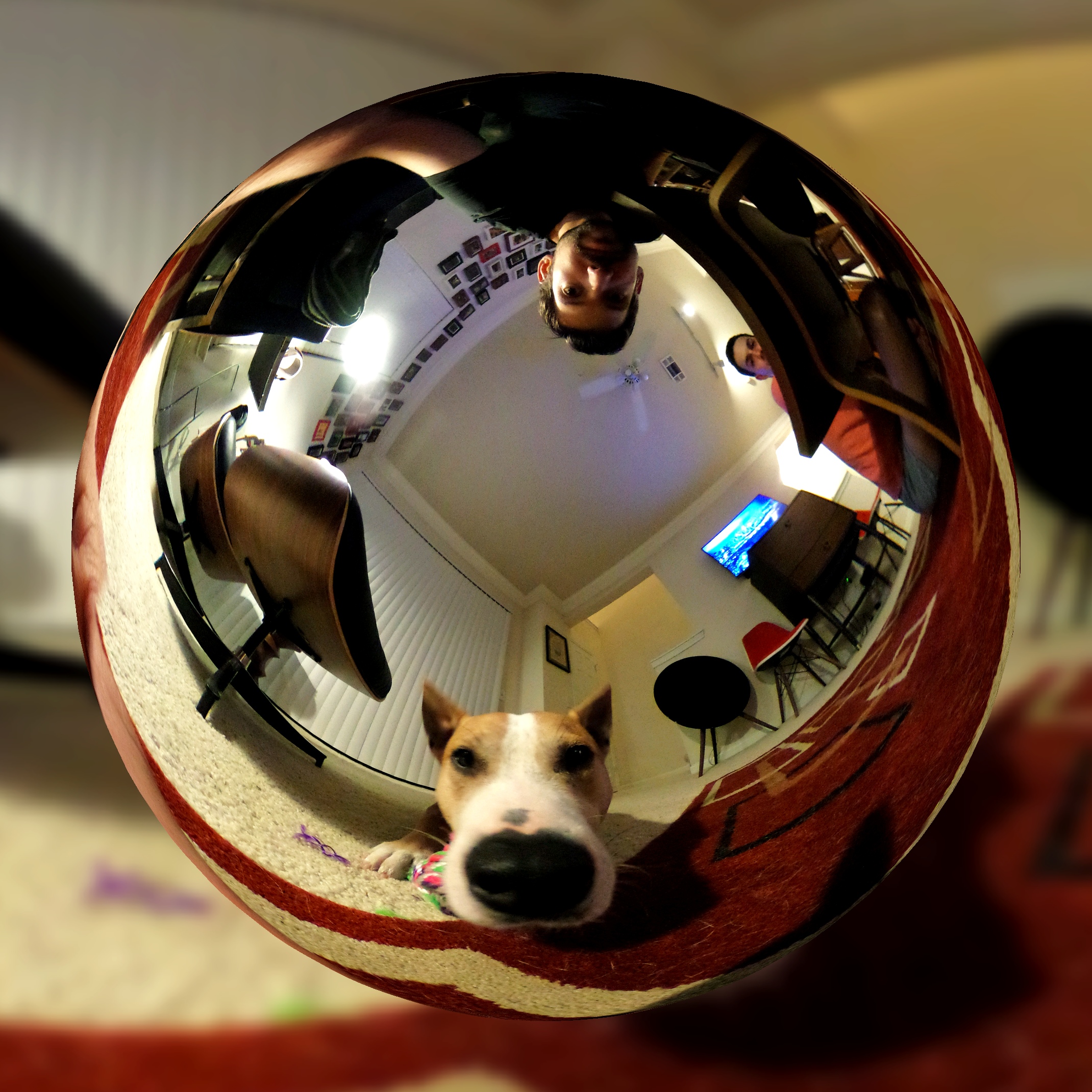
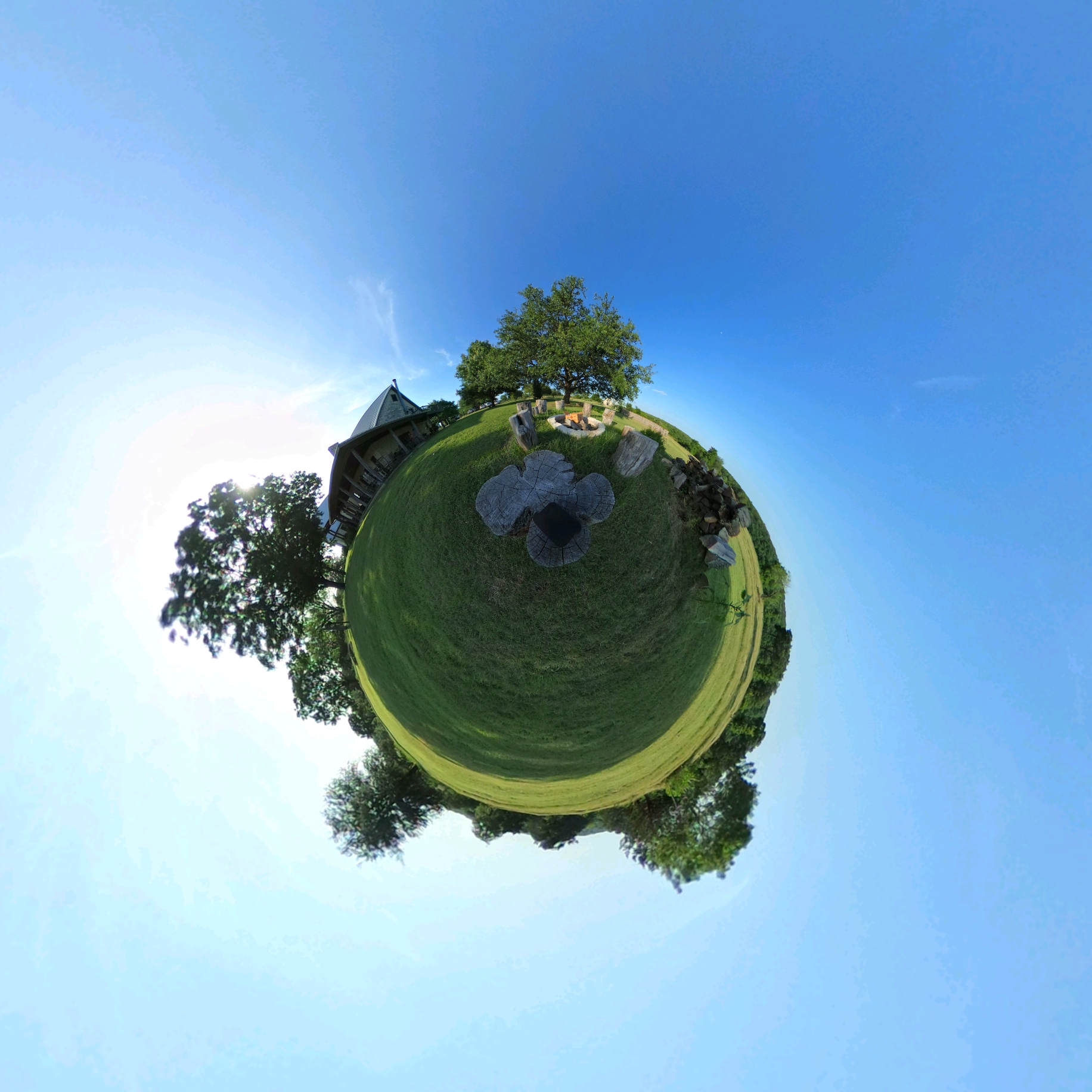
The Ugly
Nonremovable 8GB storage. Terrible disappointment here. Tear-downs reveal an 8GB Transcend micro-SD card buried deep inside the unit that you can replace if you feel handy with a screwdriver and careless with your warranty (tutorial; not recommended). Why, Ricoh? And if it’s going to be non-expandable, and there’s only one model, why not spend the extra pennies to make it larger?! Especially for a device at this price-point.
Both the Samsung and R105 have micro-SD slots that are customer accessible because that’s how it should be.
HD Video is limited to 1080p. I didn’t think much of that, but viewing equirectangular imagery requires zooming in on small segments of it: resolution is more important than I realized. I don’t do much video work, so this isn’t a deal-breaker for me. The Gear shoots in 4K, but it is also a year newer.
The Verdict
Taken with the HDR Rendering mode enabled. It did very well with the harsh shadows, but any movement in the scene causes harsh artifacts like the cars driving on the road.
I really enjoy the Theta! It’s portable, takes reasonably high-quality images, and does better with stitching than other units I’ve used. I haven’t hit the storage limitation because I haven’t done much with video, but that would be a disappointment for videographers. Battery life hasn’t been a problem. At this point, I’m very pleased with the device, but it is at the top end of the price range and there are newer devices that cost less. The lesson here seems to be that this was a winning form factor for better stitching and portability, so look for devices that follow this geometry. Also, look for devices that offer compatibility.
As far as the format goes, I haven’t decided the best way to integrate these alongside my other photography or even embed them in websites. The solution here is an option but it suffers from large, redundant downloads and horrible performance. I’ll investigate other display options and report back.
Cheers.
It does well in very low light dive bars.
Disclaimer: I selected the Ricoh Theta S with the recommendation of a coworker at Four Kitchens, and the 4K Tech Stipend program paid for the device.